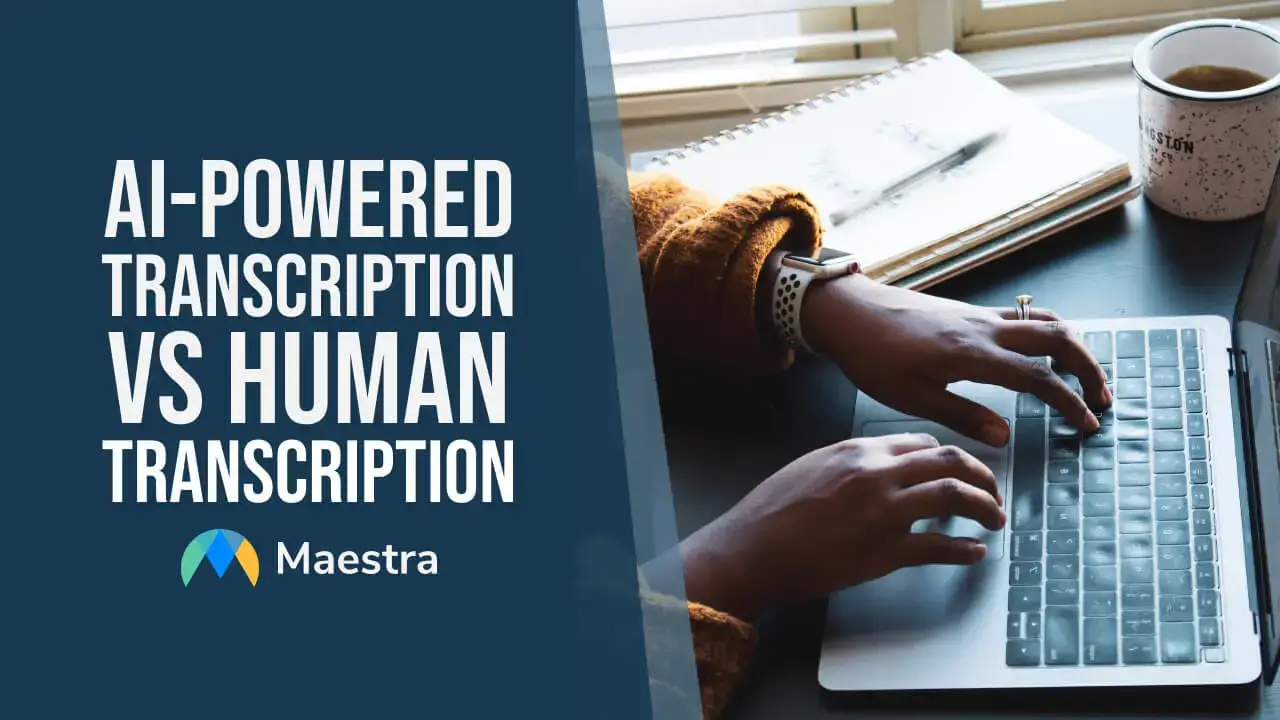AI-Powered Transcription vs. Human Transcription: Weighing the Pros and Cons

Pros of Human Transcription
- Contextual Understanding: Humans can grasp the context of conversations, interviews, or speeches. Because of this, they can provide transcriptions that capture the intended meaning, even in ambiguous situations.
- Language and Accent Adaptability: Human transcribers are proficient in multiple languages and dialects.
- Customizable Formatting and Requirements: Human transcribers may offer flexibility in formatting options. They can accommodate specific transcription guidelines or requirements tailored to individual projects.
Cons of Human Transcription
Choosing a human transcription service can be an option for sensitive or challenging projects. However, there are a lot of considerations to evaluate. Before opting for a human transcriber, note the following considerations:- Time-consuming: Human Transcription is a manual process that requires time and effort. Depending on the length of the audio or video, it may take considerable time to deliver the final transcriptions.
- Expensive: Due to the labor-intensive nature of human transcription, it can be more expensive. Automated transcription options are far less costly, especially for lengthy recordings.
- Limited Scalability: Scaling up human transcription services to handle large volumes of content might be challenging. It can lead to potential delays, which may slow down your other projects.
- Human Errors and Fatigue: As humans transcribe, there is a risk of errors. Human error is a concern especially when dealing with lengthy or complex content. Moreover, human transcribers may experience fatigue. Fatigue affects the accuracy and efficiency of the transcription process.
Maestra's Solution: AI-Powered Transcription Technology
Maestra revolutionizes the transcription landscape with its state-of-the-art AI-Powered Transcription technology. Utilizing cutting-edge algorithms and machine learning, Maestra swiftly and accurately transcribes audio and video files. It simplifies the process for content creators, businesses, and educators alike.Unique Features and Benefits of Maestra
- Advanced AI Algorithms: Maestra's advanced AI algorithms analyze speech patterns, context, and language variations. They ensure high-quality transcriptions that rival human precision. Technology’s efficiency significantly reduces turnaround time, boosting productivity for time-sensitive projects.
- Efficient Transcription: Maestra offers extremely fast and efficient transcription services. Simply upload your video and audio file and convert. Get a transcript with 99 accuracy and edit the transcript as needed before downloading.
- Flexible Options for Different Needs: Use Maestra for many different transcription needs, including video-to-text transcription, audio-to-text transcription, automatic subtitling, and more.
Comparing AI-Powered Transcription and Human Transcription
- Accuracy and Quality: Maestra's AI-Powered Transcription creates accurate transcriptions. It offers a level of quality that meets the demands of diverse transcription tasks.
- Speed and Efficiency: In terms of speed, AI-Powered Transcription takes the lead. Maestra's technology rapidly processes audio and video files, significantly reducing turnaround time. On the other hand, Human Transcription may require more time due to the manual nature of the process.
- Cost-effectiveness: AI-Powered Transcription proves cost-effective for large volumes of content. It requires fewer resources and labor compared to human transcriptions. However, for highly specialized or sensitive projects, human transcription might be worth the investment.
- Adaptability and Scalability: Maestra's AI-Powered Transcription offers remarkable adaptability to various projects. The AI transcription software scales effortlessly. It seamlessly handles different languages, accents, and technical terms. It’s suitable for diverse needs. Human Transcription, while versatile, may face limitations in scaling up for extensive transcription tasks.
